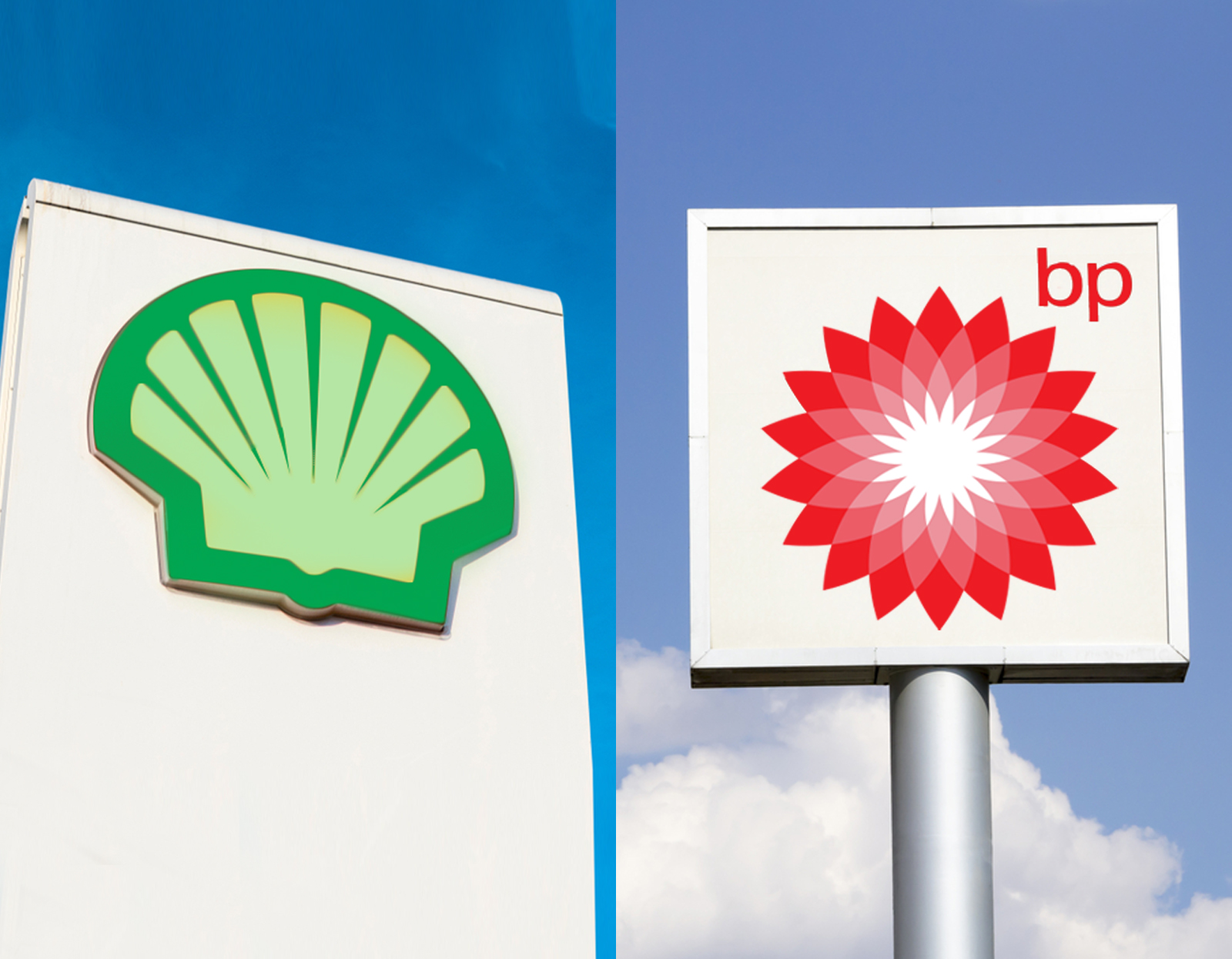The psychology of red vs green branding
Using the right brand colours for your business is very important. So what is the psychological effect of having a red logo vs a green logo? We took this to the test and swapped the logo colours of two iconic fuel brands to see what effect this has on our perception of each brand. It is the same logo with just the colours changed – red to green and vice versa.
The results are instant: a green Shell logo doesn’t look as striking as the well-known red and gold logo. The energy and approachability of the brand have been lost. Conversely, a red BP looks very wrong! You instantly feel that the BP logo is now aggressive and uninviting. The brand has lost the serenity that the green and yellow logo created in our minds. Although this is a very exaggerated example, it does show that consistent use of strong brand colour builds trust and familiarity, which when taken away or changed will cause a disconnect and confusion with customers.
Colour can persuade people to feel a certain way, and it is simply a matter of psychology. Psychologically, red makes you eat faster but blue makes you feel safe. Think McDonalds and Australian Federal Police – both brands use the right colours to evoke an intended feeling. In this way, colour instantly creates an expectation of what to expect from your brand. This expectation will make it easier to get your message across in all marketing channels.
What is the psychology of colour?
In simple terms, the psychology of colour is a person’s reaction to a specific colour. When you see a certain colour, you subconsciously react in a specific way. This comes from years of conditioning from birth and is specific to different cultures. We actually use colour psychology everyday without even knowing it! Red is associated with creating feelings of hunger, excitement and is also associated with discounts. If we asked you to picture your favourite fast food restaurant, there is a high chance that their logos contain the colour red. Colour impacts our mood, how we behave and how we feel. So, it not surprising that the persuasive power of colour is used in marketing and branding.
The psychology of colour in branding
Choosing a brand colour should not be a personal preference but rather a strategic choice to elicit a desired response. As shown in the chart below, different brand colours are associated with different feelings:
- Yellow is optimistic
- Orange is friendly
- Red is exciting
- Purple is creative
- Blue is trustworthy
- Green is peaceful
- Grey is calming
Brands can use this knowledge to their advantage in order to set the mood for the experience we can expect from the brand.

The number one brand colour is blue
A study of the world’s top 100 brands (by brand value) showed that the most popular logo colour is blue.

Why is it so popular? Blue is a cool colour often associated with trust and stability. It is a safe colour. Dark blue brings security, professionalism and formality whereas light blue is more calming and lends itself to tranquility, trust and openness.
The number two brand colour is red

Red, the next most common colour is energetic and attention-grabbing, showing excitement, strength and power.
The number three brand colour is black

Black, a close next to red is associated with prestige and power as well as glamour, luxury and elegance.
Other brand colours

Green tones evoke feelings of freshness, harmony and growth through to wisdom, serenity and loyalty when approaching turquoise.

Purple represents quality, truthfulness and sophistication and also serenity at the lighter end of the spectrum.

Lastly, orange is playful, enthusiastic, happy, friendly and connected.
Brand colour should fit personality
Colours are most effective when consumers believe that the brand’s colour “fits” the brand. Colour should align with a brand’s personality rather than aim for a certain preconceived expectation based on your industry. There is no right or wrong, but strong use of colour plays a very important role in brand awareness and credibility.
Does your brand need a colour refresh or are you looking to develop a new brand?
Speak to the brand colour professionals at Mela Creative today.




